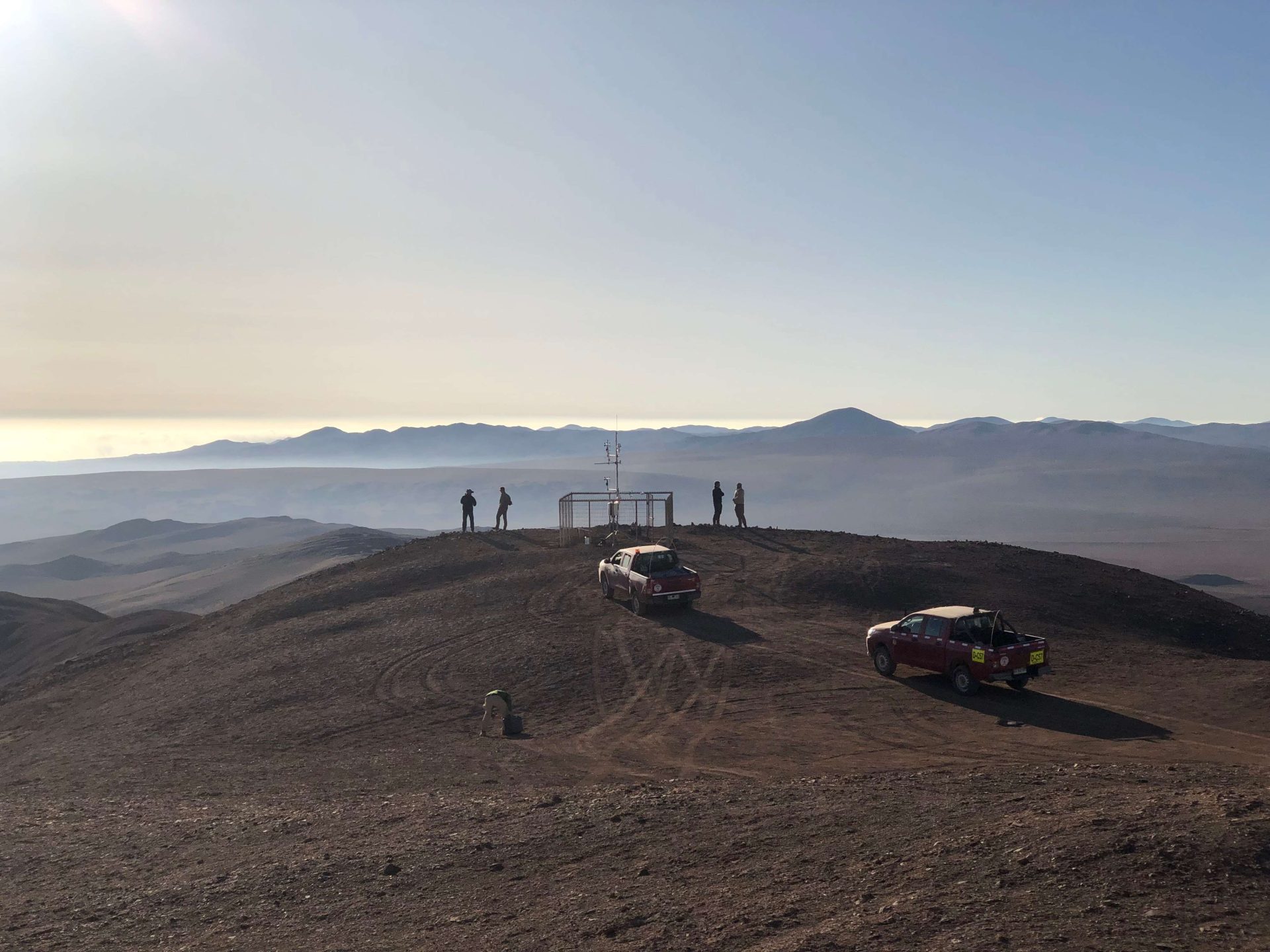
©José Vicencio Veloso
Caption: Scientists preparing a new weather station in the Atacama Desert. Together with other newly installed stations, a network is formed to fill the observational gap within this remote area. The novel ground-based observations are used, e.g. to characterize the climate in the hyperarid desert core, anchor newly developed satellite-based retrievals of fog occurrence and tune numerical models.
Water is a vital factor for the evolution of the Earth System. It is essential for triggering biological and geological processes and thereby decisive for the evolution of life and landscape. However, in particular for water-limited ecosystems such processes are poorly understood. Moreover, mutual relationships between life and surface evolution have not been studied before even though they respond to the common trigger which is water.
To study Earth evolution at its dry limit, the CRC1211 choose the Atacama Desert, which is likely the driest non-polar desert on Earth, for a study region. The overarching goal is to determine mutual evolutionary relationships between Earth-surface processes and biota. To this end, thresholds for biological colonization and concurrent fluvial transformation of landscapes are characterized, tipping points between biotically and abiotically controlled Earth-surface systems are identified and detailed long-term terrestrial climatic records of the oldest and most arid zones on Earth are established.
To quantify the water supply and relate it to biological and geological alterations, atmospheric processes are studied in detail. Initially a focus is set on the recent climate which offers more observations compared to previous geological epochs. Satellite and ground-based remote sensing, in-situ measurements as well as numerical weather modeling (regional and large eddy simulations) are exploited to determine the spatio-temporal variability of water vapor transports, precipitation rates and fog occurrence. Thereby, mechanisms acting at different scales are investigated. Results are also extrapolated into former climate regimes using numerical climate modeling.
This interdisciplinary research is carried out jointly by the University of Cologne, University of Bonn, RTWH Aachen, University of Heidelberg, University of Frankfurt, Forschungszentrum Jülich, Helmholtz-Zentrum Potsdam (GFZ) together with partners in Chile and Namibia. The project is spread across three research phases between July 2016 and June 2028. For more information see https://sfb1211.uni-koeln.de
The CRC1211 is funded by the Deutsche Forschungsgemeinschaft – DFG.
